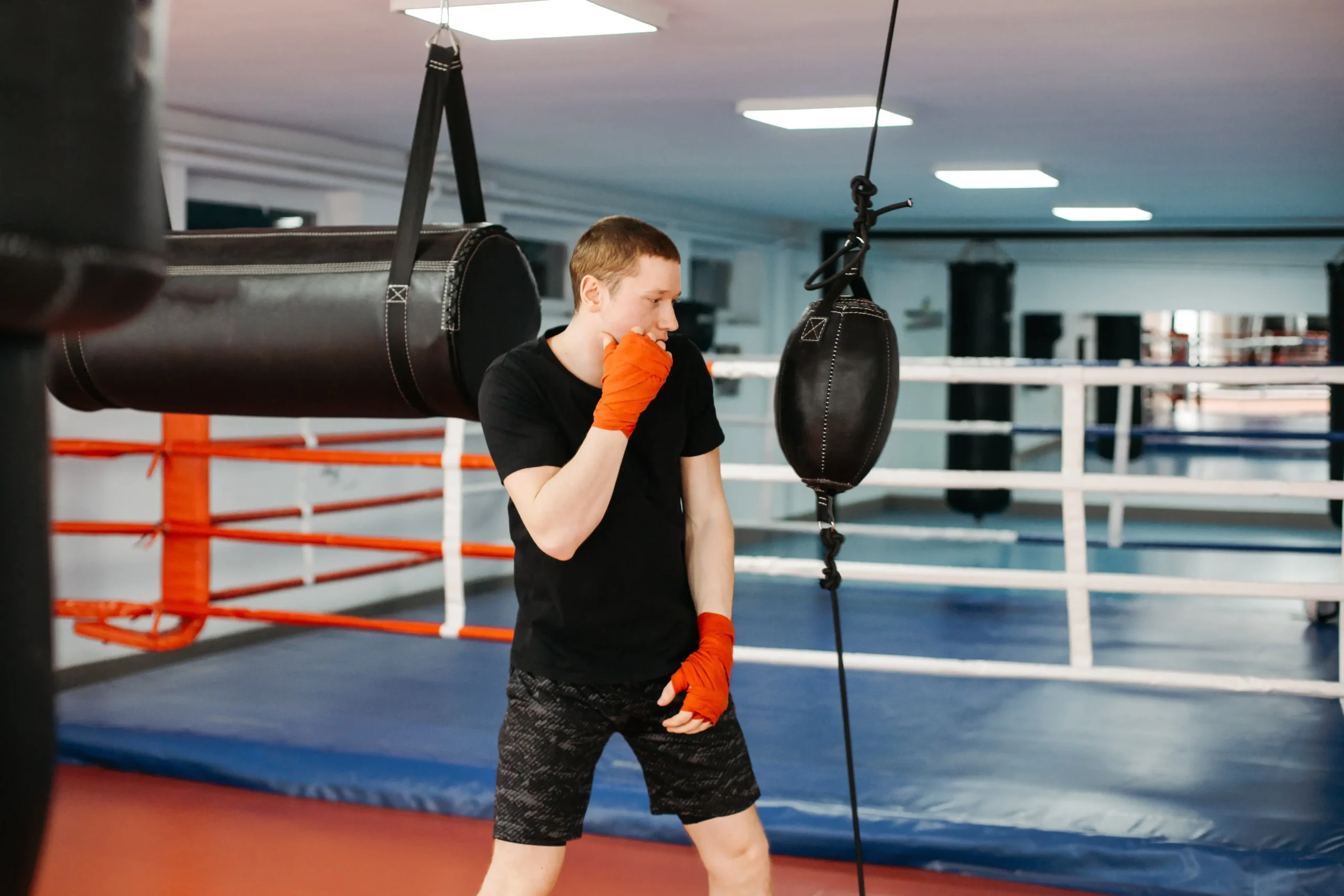Do you know what separates a knockout punch from a mere tap? Your muscles matter, but it’s a mix of physics, biomechanics, and technique. The force behind a punch is a marvel of human potential, often misunderstood.
Here, I will break down the science of punch power, how it’s measured, and what really makes a punch land with force. I’ll also share some numbers on average punch forces, based on skill level and experience.
You can get an understanding of how to improve your own punching power safely!
Table of Contents
What is Punch Force?
Punch force is the combination of mass and acceleration. In most basic physics terms, punch force is governed by the formula F = ma (Force equals mass times acceleration). But it’s not just about how heavy the object (your fist) is, but how fast it’s moving.
Components that Create Punch Force
- Mass: It includes your body weight, the mass of your arms, and even the weight of the gloves you’re wearing. Heavier limbs and equipment can add force, but only if they move quickly.
- Acceleration: It refers to how fast your body parts (like your fist, forearm, or body) accelerate when you throw a punch. The faster you move, the greater the punch force.
- Impact Duration: It is the amount of time the punch stays in contact with the target. A punch that lands quickly (with a shorter impact duration) has a higher peak force.
Units of Measurement
If we talk about punch force, we use different units depending on the context. Here are the most common ones:
| Unit | What It Measures | Why It’s Used |
| Newtons (N) | Standard unit of force in physics | Universally accepted in science and engineering for precise measurements. |
| Kilograms-force (kgf) | Gravitational force exerted by a 1 kg mass | Used in some regions and industries. Less common in scientific contexts. |
| Pounds-force (lbf) | Force exerted by a 1 lb mass under gravity | Common in the U.S. It is useful for practical, everyday understanding. |
| Pounds per Square Inch (psi) | Pressure (force per unit area) | It is important for understanding how concentrated the punch is on a target. |
Quick Examples:
- An average untrained person can punch with a force of around 750 N.
- A professional boxer might generate up to 5,000 N of force.
- Francis Ngannou’s punch has been measured at approximately 129,000 N, which is about 96 horsepower.
Understanding these units helps us grasp just how hard a punch is and how it affects the target.
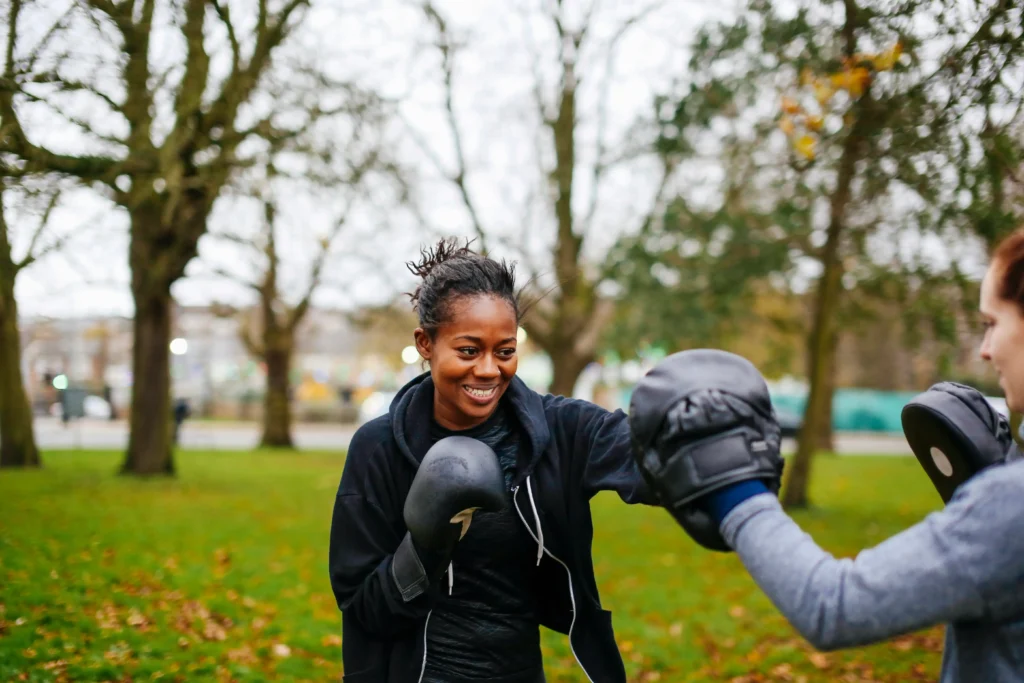
The Biomechanics of a Powerful Punch
1. The Kinetic Chain
As body is as a well-oiled machine, where each part works in harmony to deliver maximum force. This is the essence of the kinetic chain. The sequential transfer of energy from your feet through your legs, hips, torso, and finally to your fist.
- Ground Reaction Force (GRF): It all starts with pushing off the ground. The force you generate by pushing against the floor propels your body forward, and initiate the kinetic chain.
- Core Engagement: Your core acts as the central hub, and it stabilize and transmit energy from your lower body to your upper body. If you don’t have a strong core, power leaks out, and reduce punch effectiveness.
- Sequential Muscle Activation: Powerful punches involve a coordinated sequence: legs → hips → torso → shoulders → arms → fist. Each segment must activate in the correct order and timing to maximize force transfer.
2. Speed vs. Strength
As strength is important, speed often plays a role in punching power. According to the equation Force = Mass × Acceleration, if you increase the speed (acceleration), your punch can have a greater impact than simply adding mass.
- Fast-Twitch Muscle Fibers: These fibers are must for explosive movements. Training them increases your ability to accelerate your punches quickly.
- Training Tips: Add exercises like plyometrics, sprints, and explosive lifts to develop these fibers.
3. Muscle Engagement
Punching power emphases on arm strength and how the whole body works together.
- Hip and Torso Rotation: Rotate your hips and torso to generate significant force. It is then transferred through your arm to the target.
- Key Muscle Groups: Glutes, obliques, lats, shoulders, and triceps all play role to deliver a powerful punch.
- Punch Type Specifics:
- Jab: Quick and precise, often set up other punches.
- Cross: Utilizes full body rotation, delivering significant power.
- Hook: Circular motion, engaging the torso and hips for force.
- Uppercut: Vertical punch, often generated from a lower stance.
The Role of Technique and Form
Proper technique is a must for you. A well-executed punch with correct form generates more force than a poorly thrown one, even if the latter feels stronger.
- Efficiency of Movement: Minimize unnecessary movements so that all energy is directed toward the punch.
- Common Technical Flaws: Issues like improper foot positioning, lack of hip rotation, or weak core engagement can reduce punch power.
- Focus on mastering technique before strength training.
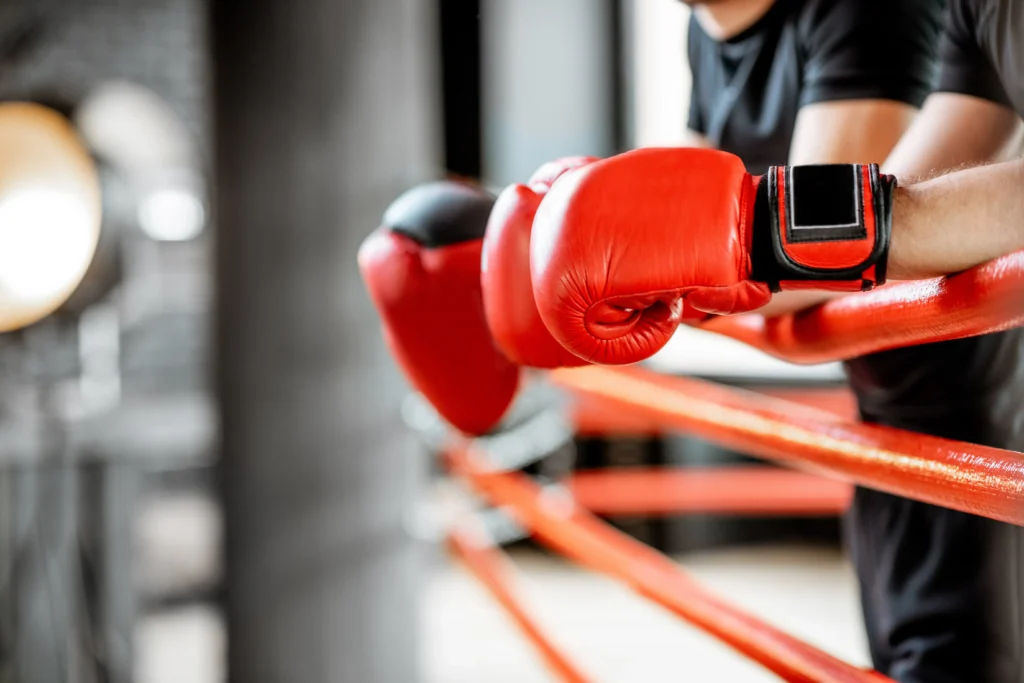
How to Measure Punch Force?
Researchers and professionals use several tools to assess punch force:
- Force Plates: Measure ground reaction forces during a punch, and help understand how force is transferred from the ground up.
- Accelerometers/Wearable Sensors: Devices like the Lubeby Smart Punching Bag Smart Force Tracker attach to punching bags or gloves to measure acceleration and impact force.
- Instrumented Punching Bags: They are bags with embedded sensors to capture data on punch force, speed, and location.
- High-Speed Cameras: They are used for detailed biomechanical analysis, and capture movement patterns and punch techniques.
For personal use, several tools are available:
- Consumer-Grade Sensors: Devices like the Lubeby Smart Punching Bag Smart Force Tracker can provide real-time feedback on punch force and speed.
- DIY Methods: They are not highly accurate, but you can use sandbags or makeshift sensors to get rough estimations for casual tracking.
Peak vs. Average Force
- Peak Force: The maximum force exerted at a single point during impact, often associated with knockout power.
- Average Force: The force sustained over the duration of the impact, contributing to sustained damage and wear-down.
Peak force is critical for knockouts, average force over the punch’s duration contributes to sustained impact.
Average Force Data and Benchmarks
Here is comparative data on punch force across demographics and training levels:
| Category | Average Force | Peak Force | Source |
| Untrained Adult Male | 68–90 kg (150–200 lbs) | N/A | General consensus in sports science, various studies. |
| Untrained Adult Female | 32–54 kg (70–120 lbs) | N/A | General consensus in sports science, various studies. |
| Amateur Boxer (Male) | 136–227 kg (300–500 lbs) | 227–450 kg (500–1000 lbs) | Varies by weight class. Replicated findings across multiple studies. |
| Professional Boxer (Male Heavyweight) | 450–680 kg (1000–1500 lbs) | 680–1000+ kg (1500–2200+ lbs) | Research from biomechanics labs (Liverpool John Moores University, various journal articles). |
| Martial Artist (Taekwondo, Karate) | 136–360 kg (300–800 lbs) | Varies highly by technique/discipline | Wide range based on specific martial art, technique, and individual skill. |
| Elite MMA Fighter | 450–700+ kg (1000–1500+ lbs) | 700–1000+ kg (1500–2200+ lbs) | Less standardized data available. Bur comparable to professional boxers in power. |
Strategies to Improve Your Punch Force
To improve your punch power, you need to train smarter. Here’s how to build a punch that combines strength, speed, and technique.
1. Foundational Strength Training
Expert Tip: Add resistance training: Compound exercises like squats, deadlifts, and overhead presses can build your foundational and improve punching power.
- Compound Lifts: Full-body movements that mimic force generation.
- Core Strength: Engage your core to stabilize and transfer energy.
- Trycore strength training equipment (ab rollers, stability balls to emphasize core power).
2. Develop Explosive Speed and Rotational Power
- Plyometrics: Box jumps, medicine ball slams, clap push-ups.
- Rotational Drills: Practice rotational movements: Drills simulating punching motions with resistance (cable rotations, medicine ball throws) can directly improve rotational power.
- Use resistance bands and medicine balls (for developing explosive power and rotational strength).
3. Refine Punching Technique and Form
- Drill Repetition: Consistent practice of proper mechanics.
- Mirror Work/Video Analysis: Self-correction and identifying flaws.
- Heavy Bag Work: Develop power and endurance.
4. Recovery, Nutrition, and Consistency
- Don’t neglect recovery: Adequate rest, nutrition, and hydration are must for muscle repair and growth. They help you in consistent power development.
- Sleep: Must for muscle repair and growth hormone release.
- Diet: Protein intake, complex carbohydrates, hydration.
- Active Recovery: Light drills, stretching, foam rolling.
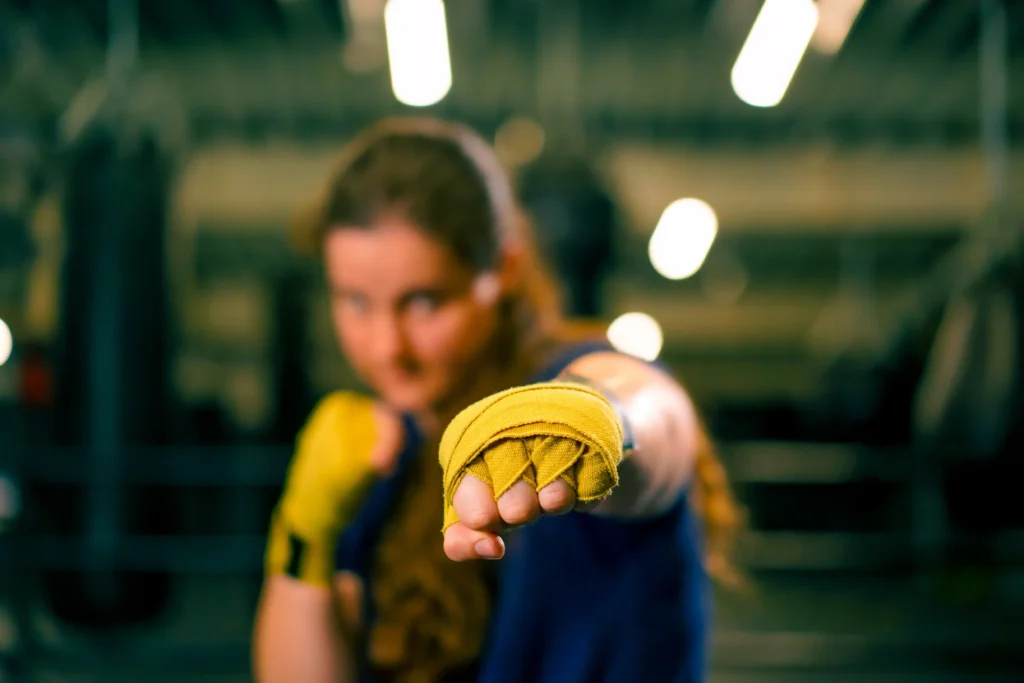
The Value of Quality Coaching
A knowledgeable coach can offer personalized feedback and structured programs to improve your punching power. You can create progressive, effective power-building routines. Also, an important aspect is motivation and accountability. You’ll stay on track with goals.
Debunking Some Punching Power Myths
Hollywood Punch vs. Reality
Movies often depict punches that send opponents flying or instantly knock them out. In reality, such dramatic effects are exaggerated for cinematic impact. A powerful punch can cause significant damage, but the immediate and dramatic knockouts seen in films are rare and often not scientifically accurate.
The “One-Punch Knockout” Myth
The idea that a single punch can instantly incapacitate an opponent is more fiction than fact. It’s possible for a well-placed and powerful punch to cause a knockout, but not the norm. Factors like the punch’s location, the opponent’s physical condition, and the timing play important roles. In many cases, a series of punches or cumulative damage leads to a knockout, rather than a single blow.
The Truth About “Punching Through” Targets
The concept of “punching through” a target is often misunderstood. It’s not about pushing the punch all the way through. But the full extension and follow-through. This technique allows for maximum energy transfer and minimizes the risk of injury. You need to incorporate proper mechanics and understand the biomechanics of punching to improve effectiveness and safety.
Realistic Expectations for Punch Force Development
Improving punching power is a gradual process that involves consistent training, proper technique, and dealing with individual limitations. Genetics can influence baseline strength and speed. Put dedicated effort, and achieve improvements. Also, set realistic goals and focus on progressive enhancement rather than expecting dramatic changes overnight.
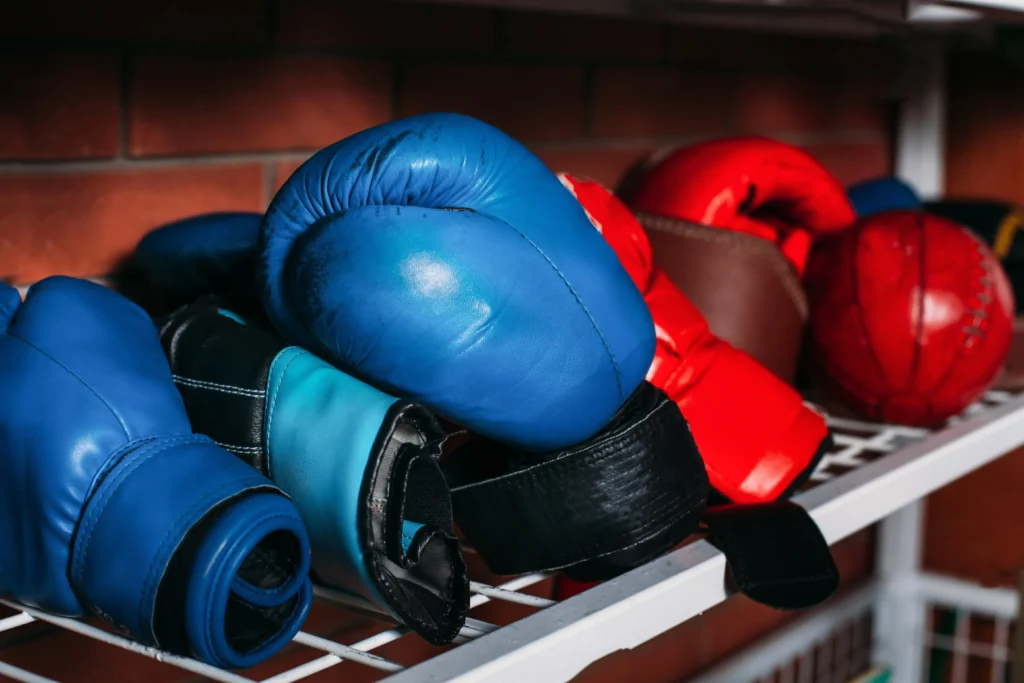
How to Prevent Injury in Punch Force Training?
Protect Your Hands and Wrists
- Wrap your hands correctly to stabilize the wrist and knuckle joints, and reduce the risk of fractures or sprains.
- Invest in well-padded gloves that offer cushioning and support. They can absorb impact and protect your hands during training.
- Avoid training on overly hard surfaces. Opt for punching bags or music punching machine with padding to minimize the risk of injury.
Avoiding Overtraining
- Follow the 10% rule. Increase your workout intensity, duration, or distance by no more than 10% per week to allow your body to adapt safely.
- Pay attention to signs of fatigue and pain. Persistent discomfort may indicate overtraining or injury.
- Include rest days into your training schedule. They allow your muscles to recover and reduce the risk of overuse injuries.
Muscle soreness is a normal response to exercise, typically lasting 1-3 days. In contrast, pain, especially sharp or persistent may indicate an injury and should not be ignored.
If you experience ongoing pain or discomfort, it’s advisable to consult a healthcare professional, such as a doctor or physical therapist, for assessment and guidance.

FAQs
How many kg of force is a punch?
The force of a punch depends on technique, body mass, and training. On average, an untrained person may generate around 50–100 kg of force. With proper training, this can increase. For instance, elite athletes can deliver punches exceeding 200 kg of force.
How much force can an average person punch with?
An average untrained individual typically delivers a punch with a force ranging from 50 to 100 kg. This can vary based on body weight, technique, and muscle engagement.
How much force is in one punch?
The force in a single punch depends on the speed of the punch, the mass of the fist, and the technique employed. For example, a study of Olympic boxers showed peak punching forces ranging from 200 to 480 kg.
How much punch force to knock out?
Knockout force isn’t solely about the amount of force, but precision, timing, and the area of impact. Studies suggest that a punch delivering around 400–500 kg of force to the head can cause a knockout, depending on the circumstances.
Is 800 on a punching machine good?
An 800-pound reading on a punching machine indicates a punch with good force. For context, elite athletes have been recorded delivering punches with forces exceeding 1,300 pounds (approximately 590 kg). Therefore, an 800-pound punch is impressive, especially for an untrained individual.
What is the average gorilla punch force?
Gorillas possess immense strength, and their punches can generate between 1,300 to 2,700 pounds (approximately 590 to 1,225 kg) of force. It is higher than that of humans, due to their superior muscle density and power.
What is the average PSI of a punch?
The average pressure of a human punch depends on skill level. Untrained individuals typically produce around 60–170 psi (most commonly around 120–150 psi). Elite boxers or MMA fighters can reach up to 800 psi, with heavyweights sometimes exceeding 1,200–1,700 psi.
Summing Up
A knockout punch is a perfect blend of physics, biomechanics, and technique. Train for speed, strength, and proper technique, and allow time for recovery. It is the foundation of powerful punching.
To improve your punch:
- Strengthen your core and legs: These are your powerhouses.
- Plyometrics and rotational drills: They boost speed and explosive power.
- Refine your technique: Proper form will lead to efficient energy transfer.
- Prioritize recovery: Rest and nutrition will help in muscle repair and growth.
Remember, true power comes from a balanced approach to training, technique, and recovery!

